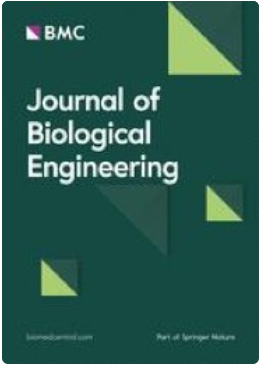The progressive trend of modeling and drug screening systems of breast cancer bone metastasis
IF 5.7
3区 生物学
Q1 BIOCHEMICAL RESEARCH METHODS
引用次数: 0
Abstract
Bone metastasis is considered as a considerable challenge for breast cancer patients. Various in vitro and in vivo models have been developed to examine this occurrence. In vitro models are employed to simulate the intricate tumor microenvironment, investigate the interplay between cells and their adjacent microenvironment, and evaluate the effectiveness of therapeutic interventions for tumors. The endeavor to replicate the latency period of bone metastasis in animal models has presented a challenge, primarily due to the necessity of primary tumor removal and the presence of multiple potential metastatic sites. The utilization of novel bone metastasis models, including three-dimensional (3D) models, has been proposed as a promising approach to overcome the constraints associated with conventional 2D and animal models. However, existing 3D models are limited by various factors, such as irregular cellular proliferation, autofluorescence, and changes in genetic and epigenetic expression. The imperative for the advancement of future applications of 3D models lies in their standardization and automation. The utilization of artificial intelligence exhibits the capability to predict cellular behavior through the examination of substrate materials' chemical composition, geometry, and mechanical performance. The implementation of these algorithms possesses the capability to predict the progression and proliferation of cancer. This paper reviewed the mechanisms of bone metastasis following primary breast cancer. Current models of breast cancer bone metastasis, along with their challenges, as well as the future perspectives of using these models for translational drug development, were discussed.乳腺癌骨转移建模与药物筛选系统的发展趋势
骨转移被认为是乳腺癌患者面临的一大挑战。为了研究骨转移的发生,人们开发了各种体外和体内模型。体外模型用于模拟错综复杂的肿瘤微环境,研究细胞与其相邻微环境之间的相互作用,以及评估肿瘤治疗干预措施的有效性。在动物模型中复制骨转移潜伏期是一项挑战,主要原因是必须切除原发肿瘤和存在多个潜在转移部位。利用新型骨转移模型,包括三维(3D)模型,被认为是克服传统 2D 模型和动物模型相关限制的一种有前途的方法。然而,现有的三维模型受到各种因素的限制,如不规则的细胞增殖、自发荧光以及基因和表观遗传表达的变化。未来推进三维模型应用的当务之急在于其标准化和自动化。人工智能的应用通过检查基底材料的化学成分、几何形状和机械性能,展示了预测细胞行为的能力。这些算法的实施具有预测癌症进展和扩散的能力。本文回顾了原发性乳腺癌骨转移的机制。讨论了当前的乳腺癌骨转移模型及其面临的挑战,以及将这些模型用于转化药物开发的未来前景。
本文章由计算机程序翻译,如有差异,请以英文原文为准。
求助全文
约1分钟内获得全文
求助全文
来源期刊

Journal of Biological Engineering
BIOCHEMICAL RESEARCH METHODS-BIOTECHNOLOGY & APPLIED MICROBIOLOGY
CiteScore
7.10
自引率
1.80%
发文量
32
审稿时长
17 weeks
期刊介绍:
Biological engineering is an emerging discipline that encompasses engineering theory and practice connected to and derived from the science of biology, just as mechanical engineering and electrical engineering are rooted in physics and chemical engineering in chemistry. Topical areas include, but are not limited to:
Synthetic biology and cellular design
Biomolecular, cellular and tissue engineering
Bioproduction and metabolic engineering
Biosensors
Ecological and environmental engineering
Biological engineering education and the biodesign process
As the official journal of the Institute of Biological Engineering, Journal of Biological Engineering provides a home for the continuum from biological information science, molecules and cells, product formation, wastes and remediation, and educational advances in curriculum content and pedagogy at the undergraduate and graduate-levels.
Manuscripts should explore commonalities with other fields of application by providing some discussion of the broader context of the work and how it connects to other areas within the field.
 求助内容:
求助内容: 应助结果提醒方式:
应助结果提醒方式:


